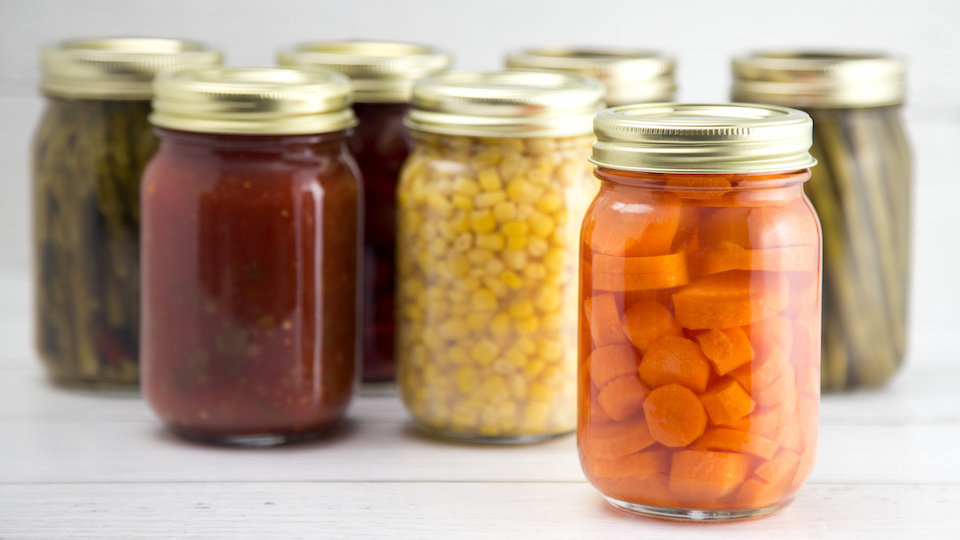Believe it or not, people enjoyed fresh produce for hundreds of years before refrigeration was introduced! You don’t need a fridge to keep food fresh. In fact, refrigeration could actually decrease the lifespan of some fresh produce. Plus, if you want to become self-sufficient, it is a good idea to stop relying on the potentially unstable power grid to keep your harvest fresh and edible, and if you have a large garden, you’ll likely need more space for storage regardless. Here are our favorite tips for storing fruits and veggies without refrigeration and a few methods that will keep your produce good for months on end.
Tips for avoiding refrigeration
Don’t refrigerate in the first place
Once fruits and vegetables have been chilled or refrigerated, they need to stay that way, or they’ll go bad, becoming mushy and brown after just a few days on the counter. If you are growing produce in your own yard, don’t let it go into the fridge unless you plan to eat it within a week. If you want to stock up, only buy veggies that haven’t been in the refrigerator.
Buy local
Speaking of veggies that haven’t been in the fridge, most produce from farmers’ markets or local growers is fairly fresh and usually straight from the ground. Seek out organic farmers in your area and try to buy locally whenever possible. This will also help ensure that you know where you produce comes from, and you won’t have to worry about what chemicals were used to keep it fresh as it traveled across the country to your grocery store.
While it is possible to store your fruits and veggies at room temperature, they will usually start to lose flavor and begin to rot after two to three weeks. Try these methods to increase the shelf-life of your produce and keep nutrient-rich food on hand in case of emergency.
Don’t harvest too early
The longer you let fruit and vegetables stay on the plant, the longer they will last. Don’t harvest until your fruit or veggie is totally ripe or if you need it for a meal that you plan to eat in the next few days. Remember, some crops such as kale, collards, parsnips, salsify, leeks, and Brussels sprouts are all incredibly cold hardy and can be left in the ground over the winter in most climates. Cover these crops with at least two inches of straw if you want to overwinter them in this manner. Keep in mind, this may not be a good option if you have issues with rabbits, deer, or other garden critters coming to your plot for a mid-winter snack.
Get rid of over-ripe produce
If you have any fruits or vegetables that are beginning to show signs of mold, rot, or mush, get rid of them right away. This can quickly spread to your other food, so it is important to toss these old goods into the compost pile to preserve the rest of your harvest.
Keep ethylene-sensitive and ethylene-producing foods separate
Most fruit, including avocados, bananas, kiwis, mangoes, pears, plums, and tomatoes, produce a gas called ethylene as they ripen, which is why they will often start to get that sickly-sweet smell when they are going bad. This gas can cause other foods to ripen too quickly, especially foods that are sensitive to ethylene like apples, broccoli, carrots, leafy greens, and watermelon. Be sure to keep these types of fruits and veggies separate to increase shelf life and avoid washing fruit until right before you are ready to eat it, as excess moisture can increase mold growth.
Methods of produce storage
Root cellar
Root cellars have been around for hundreds of years, with millions of people using this technique to store fruits and vegetables in the cold ground as a sort of rudimentary refrigeration. This technique works just as well today and can be a great help for all of your food storage needs. Be sure that your root cellar has proper ventilation, temperature, humidity control, and protection from rodents, and you will have an excellent place to store all of your fruits and veggies.
Older homes often have a root cellar built into the basement, but you may also have one adjacent to your house with access from the outside. If you haven’t used your root cellar, now is the time to clean it out and put it to use. You can also build a root cellar with the proper knowledge and supplies, but be sure to speak with an expert before beginning any construction on or around your home.
Canning
While canning may seem like an ambitious undertaking, it isn’t as difficult as it may first appear. In fact, all you need is a canning pot and some clean, unused mason jars and lids to turn your fresh crops into long-lasting canned food. You can use foods that have a short shelf life such as tomatoes to make sauces and salsa while apples can be turned into applesauce or apple butter.
Be sure to follow all canning guidelines to maintain the safety and integrity of your food. If you skip a step while canning, you are inviting dangerous bacteria to take up residence in your hard-earned food.
Dehydrating
With a dehydrator, you can make portable, easily storable food that doesn’t take up a lot of space. You don’t need a ton of specialized equipment, and most fruits and veggies are excellent when dehydrated. Many can also be rehydrated with a little water, which makes dehydrating a viable option for long-lasting food storage.
-Susan Patterson




